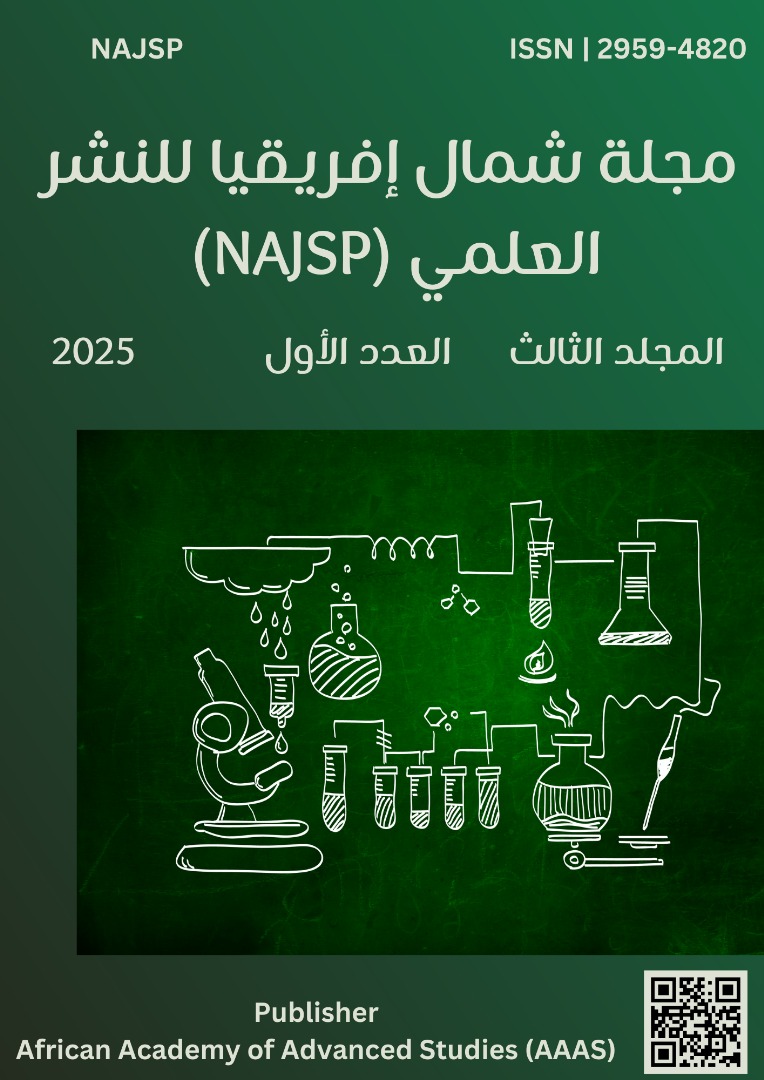Impact of Environmental and Physiological Factors on Human Earlobe Traits in Benghazi, Libya
DOI:
https://doi.org/10.65414/najsp.v3i1.406الكلمات المفتاحية:
Environmental and physiological factors، Correlation coefficients، Chi-square، Earlobe traits، Libyan individualsالملخص
The study aims to collect and analyze data through a questionnaire covering multiple variables, including gender, age, weight, height, blood type, region, and parental consanguinity, to assess their influence on the earlobe attachment trait. The study was conducted in three coastal regions of Benghazi and targeted students from Benghazi University and its branches. A total of 1,326 individuals participated, and family-related data of university students were also considered. The study investigated whether environmental and social factors, such as consanguineous marriages, affect the studied trait. After data collection, statistical analysis was performed using SPSS, including Chi-square calculations. The results indicated statistically significant associations for weight, region, gender, and parental consanguinity, with Chi-square values of 10.663, 11.873, 11.51, and 77.07, respectively, at P ˂ 0.05. The highest prevalence of free earlobes was observed in females (51.2%), the second weight category (49.1%), the third height category (67.8%), and individuals with no parental consanguinity (63.25%). In contrast, attached earlobes were most prevalent in specific blood types (41.3%) and regions (89.1%). Additionally, correlation coefficients between these traits and earlobe attachment showed an inverse relationship: -0.065 (weight categories), -0.021 (regions), and -0.008 (gender). However, only the correlation between weight categories and earlobe attachment was statistically significant. This suggests that earlobe inheritance follows an independent genetic pattern, except for the influence of weight categories, which showed a significant association.
التنزيلات
منشور
كيفية الاقتباس
إصدار
القسم
الرخصة
الحقوق الفكرية (c) 2025 Intesar Ahmad Elmasli, Hanan K. Bokhamada, Fathia A. Hamid Halom, Fatma Mansour Elmestiri, Fariha Mahmoud Alamin

هذا العمل مرخص بموجب Creative Commons Attribution 4.0 International License.






